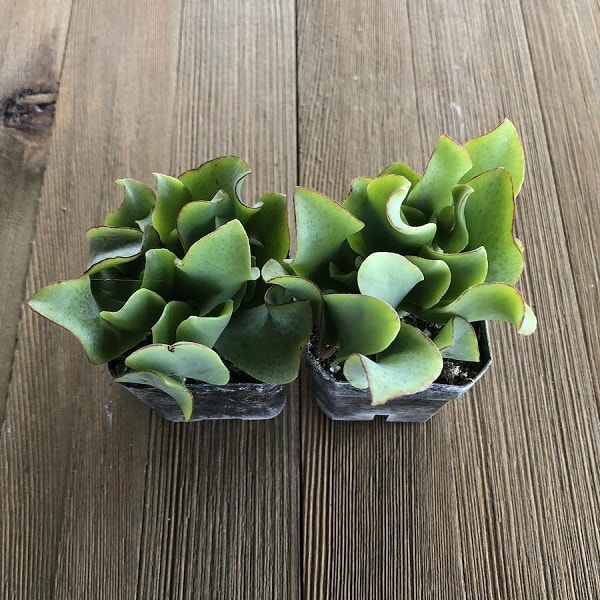Crassula Arborescens or as famously call Ripple Jade is a species of succulent plant belonging to the family Crassulaceae.
It is an endemic plant of the Western Cape Province, South Africa.
It is slow-growing and reaches a height of 0.6-1.2 meters, with a thick trunk of about 30cm.
The leaves are fleshy, rounded, whitish-green.
The most striking thing about Crassula Arborescens is that its leaves have a reddish color throughout the perimeter of the leaf.
That reddish tint becomes more acute in winter due to the cold.
It blooms towards winter, producing white or pink and small flowers, grouped in inflorescences.
Tips to take care of the plant Ripple Jade
Illumination
The Crassula Arborescens appreciates a sunny exposure.
You must be careful when we take it home, since usually in the nurseries the plants are in partial sun, so it is important to give direct sunlight to the plant little by little, because of the drastic change (of a partial sun in full sun) its leaves can burn.
So, to avoid this, what you will do is place it for example in front of tall plants, which protect it from direct light, and little by little, with the passing of days and weeks, we will be putting it and leaving it more and more in a somewhat more exposed area.
So the plant can withstand the sun without damage.
Substratum
If you plant the Ripple Jade in a pot, you can use a cactus substrate, but I advise you more medium-grain sands (about 5mm) such as akadama, pomice or volcanic gravel type gravel.
If you plant Ripple Jade in the garden, it is important that the soil is porous and has good drainage; if not, dig a hole of about 50 x 50cm, and fill it with some substrate mentioned above.
Irrigation
Ripple Jade, like most succulents, needs moderate watering.
To prevent the leaves of the plant from wrinkling due to lack of water or that the roots of the plant rot because of excess water, you just have to make sure before watering the plant that the substrate is dry, and so it will not fail in the irrigation.
By the way, when you water, soak all the soil/substrate well.
If you have it planted on the ground and it is already an adult, pour it at least 5-7 liters of water; and if you have it in a pot, water until it runs out of the drain holes.
Just making sure there is no excess water left.
Fertilizer
Crassula Arborescens or Ripple Jade thanks a subscriber from spring to late summer / early fall, with a specific fertilizer for cacti and other succulents, just follow the instructions specified on the package.
If there are frosts in your area during the fall, you must suspend the subscriber in mid or late summer.
When the maximum temperature is less than 20ºC; or if you live in a place with a warm or mild climate, without frosts or with weak frosts, you may be paying the Crassula Arborescens until the beginning of winter.
Plagues and diseases
Crassula Arborescens can be attacked by snails and mollusks.
Another problem that Crassula Arborescens may have is excessive watering, which can cause its roots to rot and in turn attract the pathogenic fungi.
Propagation
Crassula Arborescens can spread by cuttings.
You just have to cut a branch and let the wound dry for a week, after that plant it (not stick it) in a pot and in less than a month it will emit its own roots.
Although Crassula Arborescens is multiplied more by stem-cuttings in spring-summer, since it is more effective and faster, sometimes Crassula Arborescens can be propagated by seeds, which the plant itself produces.
If you can extract the seeds of the Crassula Arborescens, just sow the seeds in pots with a cactus substrate in the spring.
Prune
It is only necessary if any of the leaves of the Crassula Arborescens are battered or damaged if that is the case you should only cut those leaves.
And if the plant does not have any damaged or battered leaves, it does not need to be pruned.
